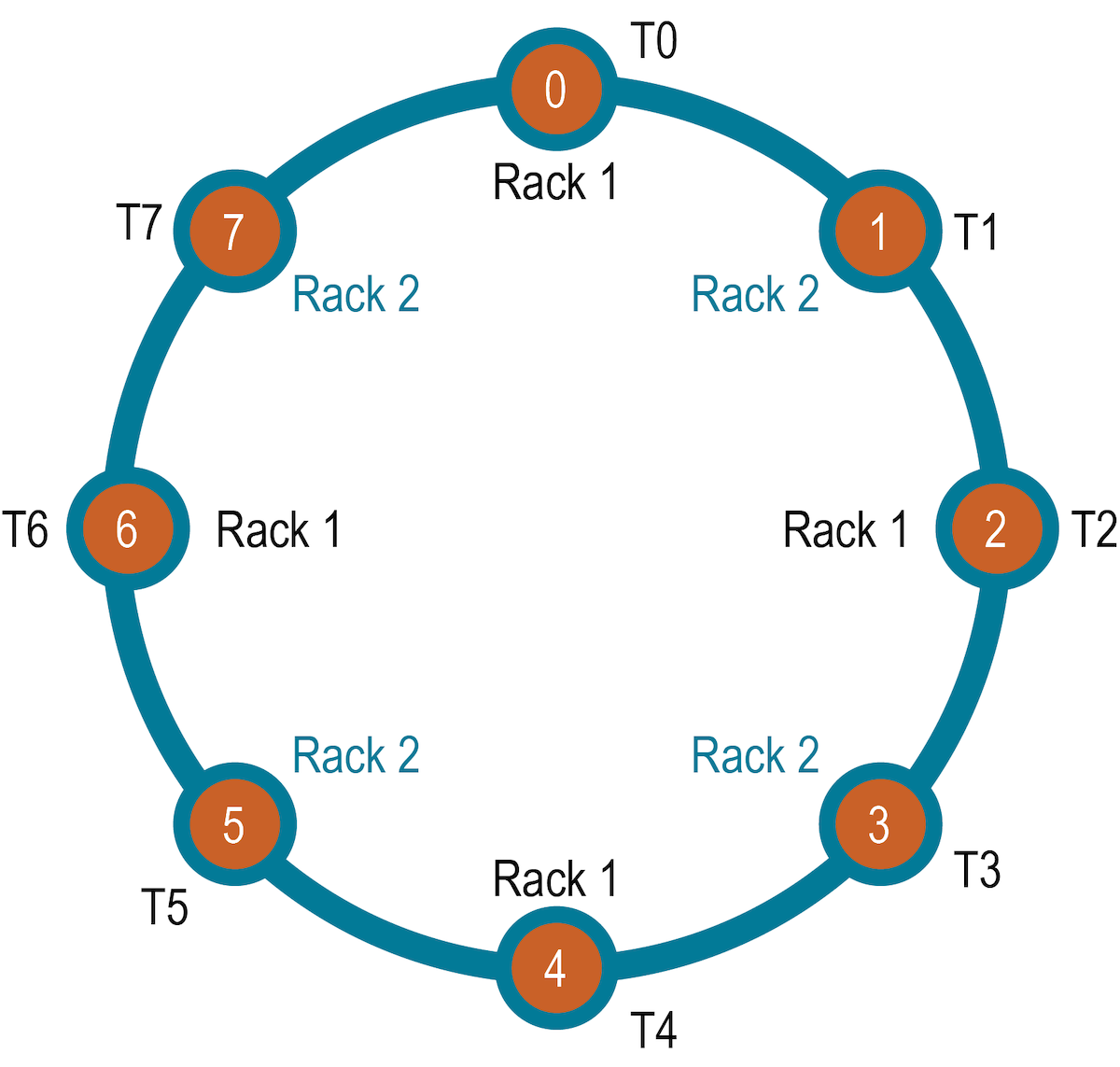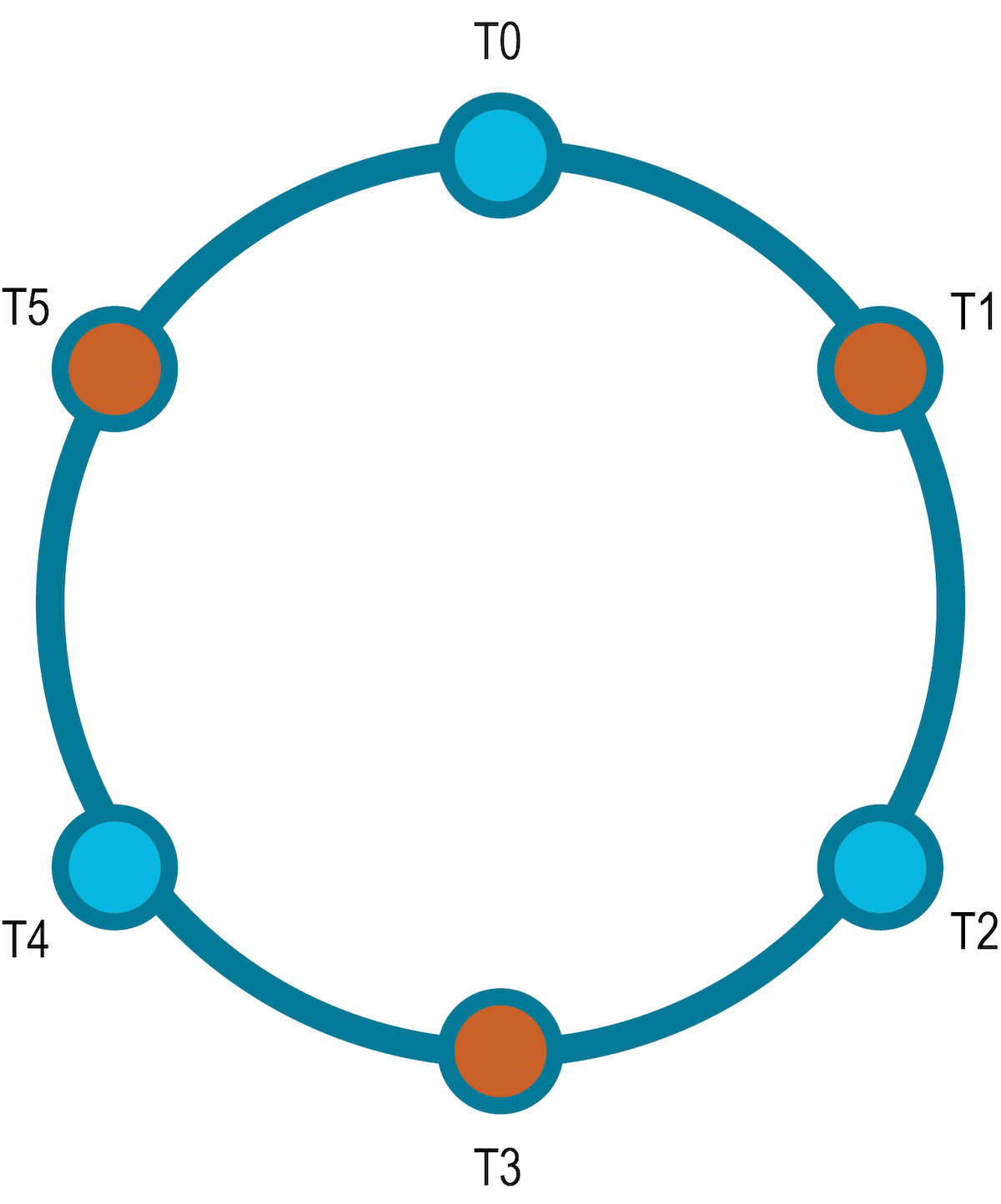Calculating tokens for single-token architecture nodes
When not using vnodes, use these steps to calculate tokens to evenly distribute data across a cluster.
cassandra-topology.properties
The location of the cassandra-topology.properties file depends on the type of installation:| Package installations | /etc/dse/cassandra/cassandra-topology.properties |
| Tarball installation | installation_location/resources/cassandra/conf/cassandra-topology.properties |
cassandra.yaml
The location of the cassandra.yaml file depends on the type of installation:| Package installations | /etc/dse/cassandra/cassandra.yaml |
| Tarball installations | installation_location/resources/cassandra/conf/cassandra.yaml |
cassandra-rackdc.properties
The location of the cassandra-rackdc.properties file depends on the type of installation:| Package installations | /etc/dse/cassandra/cassandra-rackdc.properties |
| Tarball installations | installation_location/resources/cassandra/conf/cassandra-rackdc.properties |
This page contains information on manually calculating tokens.
About single-token architecture
Use single-token architecture when not using virtual nodes (vnodes). See Guidelines for using virtual nodes. You do not need to calculate tokens when using vnodes.
When you start a DataStax Enterprise cluster without vnodes, you must ensure that the data is evenly divided across the nodes in the cluster using token assignments and that no two nodes share the same token even if they are in different datacenters. Tokens are hash values that partitioners use to determine where to store rows on each node. This value determines the node's position in the ring and what data the node is responsible for. Each node is responsible for the region of the cluster between itself (inclusive) and its predecessor (exclusive).
As a simple example, if the range of possible tokens is 0 to 100 and there are four nodes, the tokens for the nodes are: 0, 25, 50, 75. This division ensures that each node is responsible for an equal range of data. For more information, see .
Before starting each node in the cluster for the first time, comment out the num_token property and assign an initial_token value in the cassandra.yaml configuration file.
Using the Token generator
- Package installations:
token-generator num_of_nodes_in_dc ... [options]
-
Tarball installations:
installation_location/resources/cassandra/tools/bin/token-generator num_of_nodes_in_dc ... [options]
Note: If no options are entered, Token Generator Interactive Mode is invoked.
| Options | Description |
|---|---|
Help
|
Show help. |
Partitioner
|
Specify the partitioner:
|
Offset token values
|
Use when adding or replacing dead nodes or datacenters. |
Ring range
|
Specify token values within a specified range. |
Test
|
Displays various ring arrangements and generates an HTML file showing these arrangements. |
Calculating tokens for a single datacenter with one rack
token-generator 6 DC #1: Node #1: -9223372036854775808 Node #2: -6148914691236517206 Node #3: -3074457345618258604 Node #4: -2 Node #5: 3074457345618258600 Node #6: 6148914691236517202
Calculating tokens for a single datacenter with multiple racks
DataStax recommends that each rack have the same number of nodes so you can alternate the rack assignments.
- Calculate the
tokens:
token-generator 8 DC #1: Node #1: -9223372036854775808 Node #2: -6917529027641081856 Node #3: -4611686018427387904 Node #4: -2305843009213693952 Node #5: 0 Node #6: 2305843009213693952 Node #7: 4611686018427387904 Node #8: 6917529027641081856
- Assign the tokens to nodes on alternating racks in the
cassandra-rackdc.properties or the
cassandra-topology.properties file.
Figure 1. Alternating rack assignments 
Calculating tokens for a multiple datacenter cluster
- Calculate the
tokens:
token-generator 4 4 DC #1: Node #1: -9223372036854775808 Node #2: -4611686018427387904 Node #3: 0 Node #4: 4611686018427387904 DC #2: Node #1: -4690182801719768975 Node #2: -78496783292381071 Node #3: 4533189235135006833 Node #4: 9144875253562394737
- After calculating the tokens, assign the tokens so that the nodes in each datacenter are
evenly dispersed around the ring.
Figure 2. Token position and datacenter assignments 

Datacenter 1 
Datacenter 2 Token position Token position - Alternate the rack assignments as described above.
Calculating tokens when adding or replacing nodes/datacenters
--ringoffset option.- Calculate the tokens with the
offset:
token-generator 3 2 --ringoffset 100
The results show the generated token values for the Murmur3Partitioner for one datacenter with 3 nodes and one datacenter with 2 nodes with an offset:
The value of the offset is for the first node and all other nodes are calculated for even distribution from the offset.DC #1: Node #1: 6148914691236517105 Node #2: 12297829382473034310 Node #3: 18446744073709551516 DC #2: Node #1: 9144875253562394637 Node #2: 18368247290417170445The tokens without the offset are:token-generator 3 2 DC #1: Node #1: -9223372036854775808 Node #2: -3074457345618258603 Node #3: 3074457345618258602 DC #2: Node #1: -78496783292381071 Node #2: 9144875253562394737
- After calculating the tokens, assign the tokens so that the nodes in each datacenter are evenly dispersed around the ring and alternate the rack assignments.
